- Home
- Richard Dawkins
The Greatest Show on Earth Page 42
The Greatest Show on Earth Read online
Page 42
‘ENDLESS FORMS MOST BEAUTIFUL AND MOST WONDERFUL HAVE BEEN, AND ARE BEING, EVOLVED’
I’m not sure what Darwin meant by ‘endless’. It could have been just a superlative, deployed to soup up ‘most beautiful’ and ‘most wonderful’. I expect that was part of it. But I like to think that Darwin meant something more particular by ‘endless’. As we look back on the history of life, we see a picture of never-ending, ever-rejuvenating novelty. Individuals die; species, families, orders and even classes go extinct. But the evolutionary process itself seems to pick itself up and resume its recurrent flowering, with undiminished freshness, with unabated youthfulness, as epoch gives way to epoch.
Let me briefly return to the computer models of artificial selection that I described in Chapter 2: the ‘safari park’ of computer biomorphs, including arthromorphs and the conchomorphs that showed how the great variety of mollusc shells might have evolved. In that chapter, I introduced these computer creatures as an illustration of how artificial selection works and how powerful it is, given enough generations. Now I want to use these computer models for a different purpose.
My overwhelming impression, while staring into the computer screen and breeding biomorphs, whether coloured or black, and when breeding arthromorphs, was that it never became boring. There was a sense of endlessly renewed strangeness. The program never seemed to get ‘tired’, and nor did the player. This was in contrast to the ‘D’Arcy’ program that I briefly described in Chapter 10, the one in which the ‘genes’ tugged mathematically at the coordinates of a virtual rubber sheet on which an animal had been drawn. When doing artificial selection with the D’Arcy program, the player seems, as time goes by, to move further and further away from a reference point where things made sense, out into a no-man’s-land of mis-shapen inelegance, where sense seems to decrease the further we travel from the starting point. I have already hinted at the reason for this. In the biomorph, arthromorph and conchomorph programs, we have the computer equivalent of an embryological process – three different embryological processes, all in their different ways biologically plausible. The D’Arcy program, by contrast, doesn’t simulate embryology at all. Instead, as I explained in Chapter 10, it manipulates the distortions by which one adult form may be transformed into another adult form. This lack of an embryology deprives it of the ‘inventive fertility’ that the biomorphs, arthromorphs and conchomorphs display. And the same inventive fertility is displayed by real-life embryologies, which is a minimal reason why evolution generates ‘endless forms most beautiful and most wonderful’. But can we go beyond the minimal?
In 1989 I wrote a paper called ‘The evolution of evolvability’ in which I suggested that not only do animals get better at surviving, as the generations go by: lineages of animals get better at evolving. What does it mean to be ‘good at evolving’? What kinds of animals are good at evolving? Insects on land and crustaceans in the sea seem to be champions at diversifying into thousands of species, parcelling up the niches, changing costumes through evolutionary time with frolicsome abandon. Fish, too, show amazing evolutionary fecundity, so do frogs, as well as the more familiar mammals and birds.
What I suggested in my 1989 paper is that evolvability is a property of embryologies. Genes mutate to change an animal’s body, but they have to work through processes of embryonic growth. And some embryologies are better than others at throwing up fruitful ranges of genetic variation for natural selection to work upon, and might therefore be better at evolving. ‘Might’ seems too weak. Isn’t it almost obvious that some embryologies must be better than others at evolving, in this sense? I think so. It is less obvious, but nevertheless I think a case can be made, that there might be a kind of higher-level natural selection in favour of ‘evolvable embryologies’. As time goes by, embryologies improve their evolvability. If there is a ‘higher-level selection’ of this kind, it would be rather different from ordinary natural selection, which chooses individuals for their capacity to pass on genes successfully (or, equivalently, chooses genes for their capacity to build successful individuals). The higher-level selection that improves evolvability would be of the kind that the great American evolutionary biologist George C. Williams called ‘clade selection’. A clade is a branch of the tree of life, like a species, a genus, an order or a class. We could say that clade selection has occurred when a clade, such as the insects, spreads, diversifies and populates the world more successfully than another clade such as the pogonophora (no, you probably haven’t heard of these obscure, worm-like creatures, and there’s a reason: they are an unsuccessful clade!). Clade selection doesn’t imply that clades have to compete with each other. The insects don’t compete, at least not directly, with the pogonophora for food or space or any other resource. But the world is full of insects, and almost devoid of pogonophora, and we are rightly tempted to attribute the success of the insects to some feature that they possess. I am conjecturing that it is something about their embryology that makes them evolvable. In the chapter of Climbing Mount Improbable entitled ‘Kaleidoscopic Embryos’ I offered various suggestions for specific features that make for evolvability, including constraints of symmetry, and including modular architectures such as a segmented body plan.
Perhaps partly because of its segmentally modular architecture, the arthropod clade* is good at evolving, at throwing up variation in multiple directions, at diversifying, at opportunistically filling niches as they become available. Other clades may be similarly successful because their embryologies are constrained to mirror-image development in various planes.† The clades that we see peopling the lands and the seas are the clades that are good at evolving. In clade selection, unsuccessful clades go extinct, or fail to diversify to meet varying challenges: they wither and perish. Successful clades blossom and flourish as leaves on the phylogenetic tree. Clade selection sounds seductively like Darwinian natural selection. The seduction should be resisted, or should at least ring alarm bells. Superficial resemblances can be actively misleading.
The fact of our own existence is almost too surprising to bear. So is the fact that we are surrounded by a rich ecosystem of animals that more or less closely resemble us, by plants that resemble us a little less and on which we ultimately depend for our nourishment, and by bacteria that resemble our remoter ancestors and to which we shall all return in decay when our time is past. Darwin was way ahead of his time in understanding the magnitude of the problem of our existence, as well as in tumbling to its solution. He was ahead of his time, too, in appreciating the mutual dependencies of animals and plants and all other creatures, in relationships whose intricacy staggers the imagination. How is it that we find ourselves not merely existing but surrounded by such complexity, such elegance, such endless forms most beautiful and most wonderful?
The answer is this. It could not have been otherwise, given that we are capable of noticing our existence at all, and of asking questions about it. It is no accident, as cosmologists point out to us, that we see stars in our sky. There may be universes without stars in them, universes whose physical laws and constants leave the primordial hydrogen evenly spread and not concentrated into stars. But nobody is observing those universes, because entities capable of observing anything cannot evolve without stars. Not only does life need at least one star to provide energy. Stars are also the furnaces in which the majority of the chemical elements are forged, and you can’t have life without a rich chemistry. We could go through the laws of physics, one by one, and say the same thing of all of them: it is no accident that we see . . .
The same is true of biology. It is no accident that we see green almost wherever we look. It is no accident that we find ourselves perched on one tiny twig in the midst of a blossoming and flourishing tree of life; no accident that we are surrounded by millions of other species, eating, growing, rotting, swimming, walking, flying, burrowing, stalking, chasing, fleeing, outpacing, outwitting. Without green plants to outnumber us at least ten to one there would be no energy to power us. Wi
thout the ever-escalating arms races between predators and prey, parasites and hosts, without Darwin’s ‘war of nature’, without his ‘famine and death’ there would be no nervous systems capable of seeing anything at all, let alone of appreciating and understanding it. We are surrounded by endless forms, most beautiful and most wonderful, and it is no accident, but the direct consequence of evolution by non-random natural selection – the only game in town, the greatest show on Earth.
* Darwin told us that he derived his original inspiration for natural selection from Thomas Malthus, and perhaps this particular phrase of Darwin was prompted by the following apocalyptic paragraph, called to my attention by my friend Matt Ridley: ‘Famine seems to be the last, the most dreadful resource of nature. The power of population is so superior to the power in the earth to produce subsistence for man, that premature death must in some shape or other visit the human race. The vices of mankind are active and able ministers of depopulation. They are the precursors in the great army of destruction, and often finish the dreadful work themselves. But should they fail in this war of extermination, sickly seasons, epidemics, pestilence, and plague, advance in terrific array, and sweep off their thousands and ten-thousands. Should success be still incomplete, gigantic inevitable famine stalks in the rear, and with one mighty blow, levels the population with the food of the world.’
* I wish I could believe that.
* Religious traditions have long identified life with breath. ‘Spirit’ comes from the Latin for ‘breath’. Genesis has God first making Adam and then firing him up by breathing into his nostrils. The Hebrew word for ‘soul’ is ruah or ruach (cognate ruh in Arabic), which also means ‘breath’, ‘wind’, ‘inspiration’.
† The term was coined in 1907 by the French philosopher Henri Bergson. I’ve always treasured Julian Huxley’s sarcastic deduction that railway trains must be propelled by élan locomotif.
* It is with horrified fascination that I return, as if scratching an itch or pressing a toothache, to the poll, documented in the Appendix, suggesting that 19% of British people don’t know what a year is, and think the Earth orbits the sun once per month. Even of those who understand what a year is, a larger percentage has no understanding of what causes seasons, presuming, with rampant Northern Hemisphere chauvinism, that we are closest to the sun in June and furthest away in December.
* ‘Every Schoolboy Knows’ (and every schoolgirl can prove it by Euclidean geometry).
* It is no accident that Claude Shannon, when developing his metric of ‘information’, which is itself a measure of statistical improbability, lit upon exactly the same mathematical formula that Ludwig Boltzman had developed for entropy in the previous century.
* Insects, crustaceans, spiders, centipedes, etc.
† For example, a mutation in the leg of a millipede will be mirrored on both sides, and probably repeated the length of the body as well. Although it is a single mutation, embryological processes constrain it to be repeated many times left and right. It may at first seem paradoxical that a constraint should increase the evolutionary versatility of a clade. The reason is spelled out in the same chapter of Climbing Mount Improbable, ‘Kaleidoscopic Embryos’.
APPENDIX
THE HISTORY-DENIERS
At irregular but frequent intervals since 1982, Gallup, America’s best-known polling organization, has been sampling the national opinion on this question:
Which of the following statements comes closest to your views on the origin and development of human beings?
1
Human beings have developed over millions of years from less advanced forms of life, but God guided this process. (36%)
2
Human beings have developed over millions of years from less advanced forms of life, but God had no part in this process. (14%)
3
God created human beings pretty much in their present form at one time within the last 10,000 years or so. (44%)
The percentages I have inserted are from 2008. The figures for 1982, 1993, 1997, 1999, 2001, 2004, 2006 and 2007 are pretty much the same.
I am in what I am not surprised to see is a minority of 14% ticking the box for proposition 2. It is unfortunate that the wording of proposition 2, ‘but God had no part in this process’, seems calculated to bias religious people gratuitously against it. The real killer is the lamentably strong support for proposition 3. Forty-four per cent of Americans deny evolution totally, whether it is guided by God or not, and the implication is that they believe the entire world is no more than 10,000 years old. As I have pointed out before, given that the true age of the world is 4.6 billion years, this is equivalent to believing that the width of North America is less than 10 yards. In none of the nine years sampled did the support for proposition 3 drop below 40%. In two of the sampling years, it hit 47%. More than 40% of Americans deny that humans evolved from other animals, and think that we – and by implication all of life – were created by God within the last 10,000 years. This book is necessary.
The questions posed by Gallup focused on human beings, and that could, it might be said, have upped the emotional ante and made it harder to accept the scientific view. In 2008 the Pew Forum published a similar poll of Americans which didn’t specifically mention humans. The results were fully compatible with Gallup. The propositions on offer were as follows, with the percentages assenting to them:
Life on Earth has . . .
Existed in its present form since the beginning of time 42%
Evolved over time 48%
Evolution through natural selection 26%
Evolution guided by supreme being 18%
Evolved but don’t know how 4%
Don’t know 10%
The Pew questions didn’t mention dates, so we don’t know how many of the 42% who positively reject evolution also think the world is less than 10,000 years old, as Gallup’s 44% presumably do. It seems likely that Pew’s 42%, too, would go along with thousands of years rather than the scientists’ date of about 4.6 billion years. To believe that life on Earth has existed in its present form for 4.6 billion years without any change at all would seem at least as absurd as to believe that it has existed in its present form for a few thousand years, and it is certainly unbiblical.
What about Britain? How do we compare? In 2006 the BBC’s (comparatively) up-market science documentary series Horizon* commissioned an Ipsos MORI poll among British people. Unfortunately, the key question was not well formulated. People were asked to choose one of the following three ‘theories or explanations about the origin and development of life on earth’. After each option, I’ve put the percentage choosing it.
(a)
The ‘evolution theory’ says that human kind has developed over millions of years from less advanced forms of life. God had no part in this process. (48%)
(b)
The ‘creationism theory’ says that God created human kind pretty much in his/her present form at one time within the last 10,000 years. (22%)
(c)
The ‘intelligent design theory’ says that certain features of living things are best explained by the intervention of a supernatural being, e.g. God. (17%)
(d)
Don’t know. (12%)
Regrettably, these choices could have left some people without their preferred option. They leave no room for ‘(a) but God played a part in this process’. Given the inclusion of the phrase, ‘God had no part in this process’, it is not surprising that the figure for (a) is as low as 48%. Option (b)’s tally of 22%, however, is alarmingly high, especially given the ludicrous age limit of 10,000 years. And, if we add (b) and (c) together to give the percentage who favour some form of creationism, we get 39%. This is still not as high as the American figure of more than 40%, especially bearing in mind that the American figure refers to young Earth creationists, whereas the British 39% presumably includes old Earth creationists, under (c).
The MORI poll posed a second question to the British sample, about edu
cation. Given the same three theories, people were asked whether they should or should not be taught in science classes. Disquietingly, only 69% positively thought that evolution should be taught in science classes at all – whether or not alongside some form of creation or intelligent design theory.
A more ambitious survey, which included Britain but not America, was conducted by Eurobarometer in 2005. This poll sampled opinions and beliefs about scientific matters in thirty-two European countries (including Turkey, which is the only substantially Islamic country to aspire to membership of the European Union). Table 1 shows the percentages in various countries assenting to the proposition that ‘Human beings, as we know them today, developed from earlier species of animals.’ Note that this is a more modest statement than (a) in the MORI poll, since it does not exclude the possibility that God played some part in the evolutionary process. I have ranked the countries by percentage assenting to the proposition, that is, the percentage giving the correct answer as judged by modern science. Thus 85% of the Icelandic sample think, as scientists do, that humans have evolved from other species. A paltry 27% of the Turkish population do. Turkey is the only country in the table where there appears to be a majority who think evolution is actually false. Britain is ranked fifth, with 13% actively denying evolution. The United States was not sampled in the European survey, but the deplorable fact that it comes out only just ahead of Turkey in such matters has been given much publicity of late.

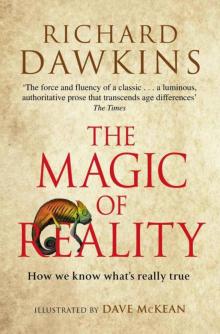 The Magic of Reality
The Magic of Reality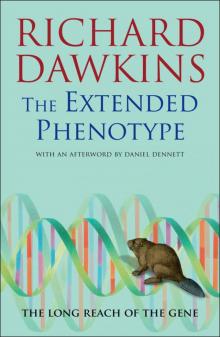 The Extended Phenotype
The Extended Phenotype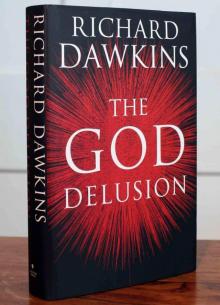 The God Delusion
The God Delusion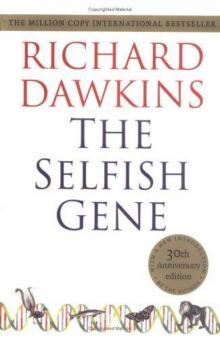 The Selfish Gene
The Selfish Gene The Blind Watchmaker
The Blind Watchmaker The Greatest Show on Earth
The Greatest Show on Earth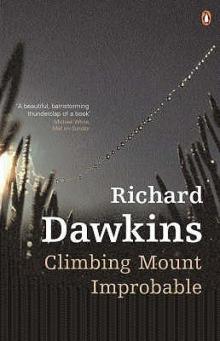 Climbing Mount Improbable
Climbing Mount Improbable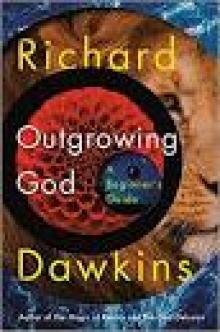 Outgrowing God
Outgrowing God Brief Candle in the Dark
Brief Candle in the Dark The Greatest Show on Earth: The Evidence for Evolution
The Greatest Show on Earth: The Evidence for Evolution Science in the Soul
Science in the Soul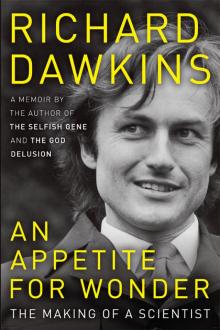 An Appetite for Wonder
An Appetite for Wonder